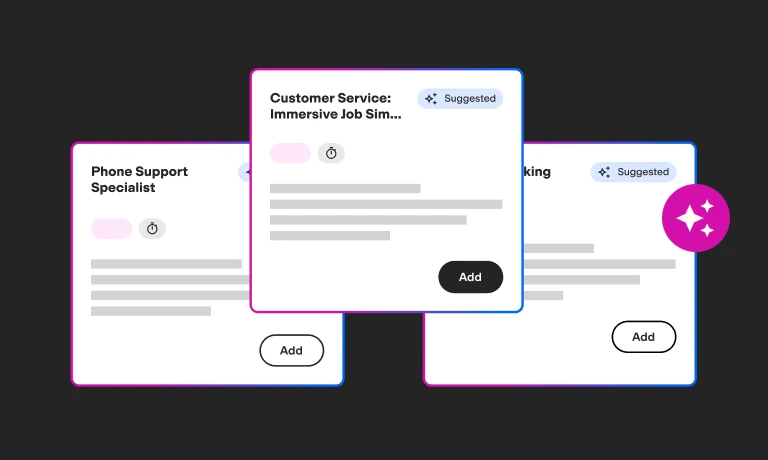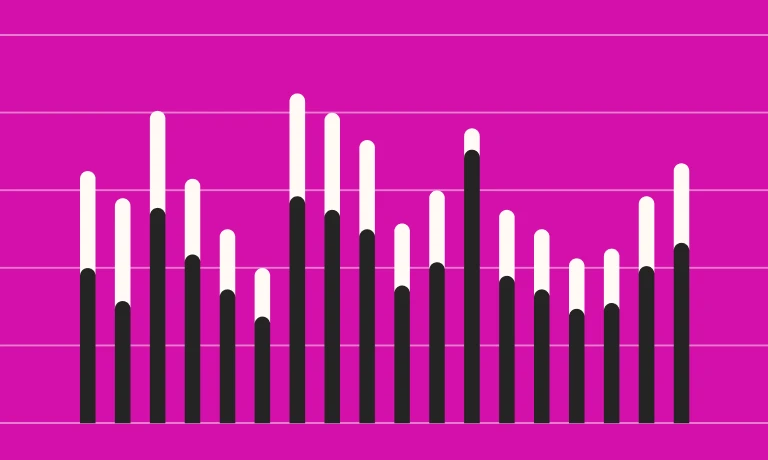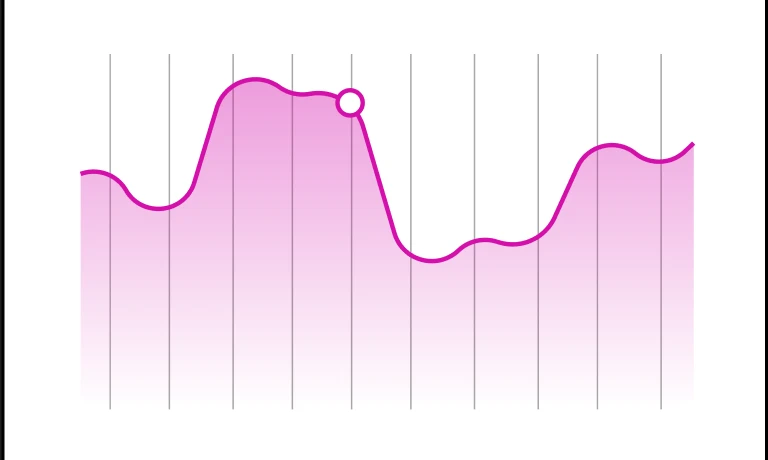Hiring the right data scientist can help your company stay competitive and data-driven in its approach. But a mis-hire can lead to inefficient data handling and misinterpretations, which can result in slow progress, flawed decisions, and missed opportunities.
Writing an effective job description is the first step to finding the right person for this position. But this is trickier than it seems. You might not know how detailed the technical requirements should be or whether to include soft skills.
Ensuring the description reflects the dynamic and evolving nature of data science while aligning with your organization's specific needs can also be challenging. In this article, we explain the main skills and best practices you need to create an effective job description and find the perfect data scientist for your company.
Table of contents
- What is a data scientist?
- Key skills to look for in data scientists
- How to write an effective data scientist job description
- Data scientist job description template
- 3 things to avoid when writing a job description for data scientists
- Next steps: Attracting and assessing data scientist candidates
- FAQs
- Hire top data scientists with TestGorilla
What is a data scientist?
A data scientist uses a blend of statistical, computational, and analytical skills to extract insights and knowledge from data. They combine scientific methods, algorithms, systems, and processes to interpret complex data sets.
Their work involves analyzing data to discover trends, patterns, and connections that can inform strategic decisions. For example, data scientists can predict upcoming or new consumer trends in your industry, which drives vital product and marketing decisions.
Key skills to look for in data scientists
Here are some critical data science skills that a good candidate for this role must have.
Hard skills:
Programming proficiency: Expertise in programming languages such as Python, R, or Scala, specifically for data manipulation and analysis
Statistical analysis and mathematical skills: Ability to apply statistical models and quantitative techniques to analyze data and predict outcomes
Machine learning: Knowledge of machine learning algorithms and their applications in predictive modeling and data mining
Data visualization: Proficiency in data visualization tools like Tableau or PowerBI to create understandable data representations for stakeholders
Big data technologies: Familiarity with big data platforms like Hadoop or Spark for processing large data sets
Soft skills:
Analytical thinking for dissecting complex data and extracting valuable insights
Problem-solving for systematically approaching problems and devising practical solutions
Communication – both verbal and non-verbal – for clearly conveying complex data insights to non-technical audiences
Collaboration for working with data engineers, business analysts, and other stakeholders
Curiosity for exploring new data processing methodologies and tools
Adaptability for adopting new data science technologies and methodologies
The best insights on HR and recruitment, delivered to your inbox.
Biweekly updates. No spam. Unsubscribe any time.
How to write an effective data scientist job description
Follow these four best practices to create a detailed and appealing data scientist job description.
1Be specific about technical requirements
List the technical skills required for the role. For instance, mention the programming languages (e.g., Python, R) and the data analysis tools (e.g., TensorFlow for machine learning, SQL for database management) the candidate must be proficient in.
Also, talk about advanced expertise in statistical modeling, machine learning algorithms, predictive modeling, and big data platforms like Apache Spark or Hadoop if your data projects are vast and complex. This clarity helps candidates assess their fit for the role.
Explain the role’s impact
Illustrate how the data scientist's work will impact decision-making and strategy within your company. Explain the types of projects they’ll lead or contribute to, such as operational efficiency improvements, product development innovations, or predictive modeling for customer behavior.
This sets clear expectations and gives candidates a preview of their day-to-day tasks. It also excites potential candidates about the role's significance and the tangible impact they can have on the organization's success.
Emphasize the importance of data storytelling
Data scientists must translate complex data findings into helpful insights for various stakeholders.
Mention the need for data visualization skills and the ability to explain complex concepts in simple language to non-technical team members. This will attract data scientists with the soft skills you need.
Data scientist job description template
Personalize the template below to create an effective data scientist job description.
Company introduction
Briefly describe your company, including your core mission, the products or services you offer, your work culture, and any awards that showcase your authority in the industry.
Discuss attributes that make your company appealing. For instance, you might spotlight your commitment to creativity and innovation and a culture that nurtures employee development.
Benefits of working with [your company]
Document how your company supports its employees and the perks they get. Highlight benefits that will appeal to data scientists. For instance, do you invest in advanced computational resources and access to the latest data science tools? If so, mention this. Additionally, outline any unique professional development opportunities you provide, such as in-house training programs or collaborations with industry experts.
Data scientist job brief
[Company name]
Job title: Data Scientist
Reports to: [For example, Head of Data Science]
Position type: [Full-time or part-time]
Location: [For example, remote, hybrid, or on site (specify address if applicable)]
Salary and benefits: [Competitive salary package, comprehensive health insurance, etc.]
Responsibilities and duties
Develop and deploy machine learning models and statistical analysis to solve complex problems and drive strategic decisions.
Collaborate with cross-functional teams to understand business needs and deliver data-driven insights and solutions.
Conduct advanced data analysis and create predictive models to improve customer experiences, operational efficiency, and product development.
Utilize data visualization tools and data storytelling to present findings to stakeholders in an understandable manner.
Stay current on data science industry trends and advancements, applying new techniques and technologies where beneficial.
Skills and qualifications
Required skills and experience
Bachelor's or master's degree in data science, computer science, statistics, or a related field – or equivalent experience or education
Proficiency in programming languages, like [specify languages], and experience with SQL for data querying
Solid understanding of statistical modeling, machine learning algorithms, and data mining techniques
Experience with data visualization tools, like [include specific tools your company uses]
Strong problem-solving skills and a proven track record of using data to drive business outcomes
Preferred skills and experience
PhD in a related field
Experience with big data technologies, like [mention tools your company uses]
Familiarity with real-time data processing frameworks
Published research or participation in relevant industry conferences
3 things to avoid when writing a job description for data scientists
Here are three mistakes that hiring managers must avoid in their data scientist job description.
Confusing data scientists with other data roles
One common mistake is confusing the data scientist role with that of data analysts, data engineers, or machine learning engineers. Each role has its unique focus and skill set, and confusing the roles can deter qualified applicants.
For instance, avoid expecting a data scientist primarily to manage and optimize databases – a task more suited for a data engineer.
Ignoring specific data domains
Avoid being generic about the types of data the candidate will work with. Data scientists often specialize in specific domains, including time-series data, geospatial data, natural language processing, or computer vision.
If your projects are centered around a specific data type, mention this explicitly. This ensures that applicants understand the nature of the data they’ll be analyzing so they can choose whether to apply based on their expertise and interests.
Overlooking project lifecycle experience
Don't omit the importance of experience with the end-to-end data science project lifecycle, from data collection and cleaning to model deployment and maintenance.
Expecting candidates to focus only on model building – without considering the broader scope of deploying these models in production environments and the need for continuous monitoring and optimization – can lead to a mismatch in expectations.
For example, specify if the role involves cross-functional collaboration to take data science projects from inception to deployment.
Next steps: Attracting and assessing data scientist candidates
Create your job description and post it on social media, job boards, and other relevant avenues. Collect applications and then move to assessing candidates effectively.
TestGorilla is a talent assessment platform that offers various tests you can use to assess candidates. Five role-specific skills tests for this position include:
SQLite coding test (intermediate-level querying): Evaluates candidates in a realistic scenario and tests their ability to query on a database
Python (working with arrays) test: Assesses how candidates work with arrays using Python
Data science skills test: Focuses on candidates’ knowledge of fundamentals of data science and programming, machine learning, statistics, and neural networks
Power BI test: Tests candidates' proficiency in using Microsoft Power BI
Machine learning test: Checks candidates' understanding of core machine learning concepts, such as classification methods, regression methods, tree-based and ensemble methods, and unsupervised learning
To gain a deeper understanding of your applicants, you can customize these tests by adding your own questions. You can even combine multiple tests to create a personalized assessment. Take it a step further and add other test types, including personality and culture tests, cognitive ability tests, and more.
Customized assessments can help you find your top applicants quickly, accurately, and fairly.
The next step is to interview them. You can use these 100 data science interview questions.
During the assessment process, don’t hesitate to ask candidates for examples of past data projects. This could include links to GitHub repositories, Kaggle competitions they've participated in, or case studies of successful projects. This can give you a stronger understanding of their abilities.
FAQs
Do data scientists make good money?
A data scientist’s salary varies depending on experience, location, and industry. However, data scientists are generally among the higher-paid professionals in the tech field. According to Indeed, as of February 2024, the estimated average salary for a data scientist in the US is $123,574 per year.
Is the job of a data scientist hard?
A data scientist’s job can be challenging due to its technical complexity and varied skills required. The role often requires deep analytical thinking for solving complex problems.
Additionally, the field is rapidly evolving, so continuous learning is necessary to stay current with new technologies. However, these challenges can be highly rewarding for those passionate about data and problem-solving.
Hire top data scientists with TestGorilla
A strong data scientist job description is crucial to hiring a data scientist who can form meaningful conclusions and positively impact business decisions. However, a vague job posting could lead to hiring employees without the right skills, experience, or personality traits.
TestGorilla has hundreds of tests and personalized assessments to help you find and hire expert data scientists.
Try out TestGorilla today by booking a live demo or signing up for a free account.
You've scrolled this far
Why not try TestGorilla for free, and see what happens when you put skills first.


















